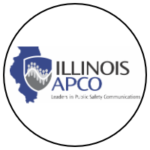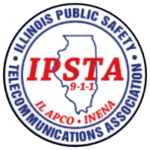Attached is a letter I submitted to the United States Bureau of Labor Statistics dated September 17th, 2016 on behalf of public safety telecommunicators nationwide.
Dear Standards Occupational Classification Policy Committee:
I appreciate the opportunity to address your committee and provide my stance on the urgent issue related to the title and classification of Police, Fire and Ambulance Dispatchers.
My public safety career has spanned over 25 years in several states. In addition to my full-time career in 9-1-1 Public Safety Communications, I have spent over a decade as an Emergency Medical Technician and a Police Officer. I worked my way through the ranks as a Telecommunicator, Communications Training Officer, Lead Dispatcher, Communications Supervisor and currently am the Executive Director at Southeast Emergency Communications (SEECOM). This governmental agency is a regional/consolidated 9-1-1 Communications Center serving 14 agencies, hundreds of responders, 215,000 residents in 100 square miles of McHenry County, Illinois which is approximately 50 miles northwest of Chicago.
Over the past quarter century, I’ve watched a profession transition rapidly from a position that was often a stepping stone into other public safety services, such as police officer and firefighter, to a sought after career. The knowledge of technology items including, but not limited to computer aided dispatch systems, radio systems and Next Generation 9-1-1 systems require a significant amount of training to become proficient. These public safety professionals are poised and ready 24/7/365 to answer calls, never knowing what the next one will be and often never learning the outcome of the one they just handled. A profession that when most police officers or firefighters “sit-a-long” state they could never do the job as stressful and complex as it is. A profession that is now included in most Critical Incident Stress Debriefing (CISD) teams due to the nature of the calls, the instructions and the involvement in the public safety arena.
The hiring process for Public Safety Telecommunicators is similar to that of police officers and fire fighters. Besides aptitude testing and interviews, there are criminal background checks, psychological checks, polygraph tests, medical tests and drug tests before an employment offer is ever made. Once they walk in the door to the 9-1-1 Communications Center, our employees are put though a rigorous 16-month training program which is nationally certified. During this period, they receive classroom
training, on the job training, and certifications in handing federal databases, state databases, cardio pulmonary resuscitation (CPR), emergency medical dispatch (EMD), national incident management system and others.To imply that Public Safety Telecommunicators (aka Police, Fire and Ambulance Dispatchers) are “precluded from administering actual care, talking someone through the procedures, or providing advice,” couldn’t be further from the truth. Industry professionals are trained to talk someone through life saving procedures. This could be in the form of emergency medical dispatch, instructions in evacuating from a fire, advice for the caller involved in a domestic disturbance, helping a lost child, etc. Are the telecommunicators on the scene arresting someone or placing an IV in their arm? “No!” However, they are the first point of contact for most emergency situations. Without their knowledge, skills and abilities, the people on the scene wouldn’t have the opportunity to provide resolution.
In our agency alone, we have recognized four different telecommunicators on four separate incidents this year where they provided emergency medical dispatch instructions in the form of CPR which resulted in the patient surviving. One was male caller that advised his wife was not breathing in the driver’s seat of the car; another was a wife that woke up to find her husband in cardiac arrest; another was a heroin overdose; and the last one involved an elderly subject that collapsed outside his house and staff instructed bystanders in life saving measures. The telecommunicator in these calls, and thousands of others each year, doesn’t get an address, hang up and dispatch a unit. They verify information, pinpoint cellular callers on mapping systems, input information into a computer for the responder’s information and safety, coordinate the response and remain on the phone with most callers to provide information, instructions or monitor the situation.
In my career, I’ve coordinated responses to armed subjects and provided vital officer safety information which assisted the responders in going home to their families. I’ve provided CPR instructions to dozens of people, some who survived. I’ve listened as a firefighter fell into an elevator shaft and helped coordinate a successful rescue effort. I’ve taken the call that one of our responders collapsed from a heart attack in the station and coordinated a response and transport to a medical facility where he survived. I’ve taken a call from a frantic mother who’s three-year-old choked on popcorn. For over five minutes, I remained on the phone listening to shrieking, crying and provided instructions to attempt and resuscitate that child. I was on that phone with the parent when their child passed in their arms. This is a call from the late 90’s that has stuck with me and had a lasting effect. This is a call that I don’t wish for any responder to endure and as a parent hug my child tight each night. All of these tasks are protective in nature and couldn’t be further from clerical.
This is a fraction of the calls that are successfully handled daily by thousands of Public Safety Telecommunicators around this great country. They are the unseen heroes and some of the humblest human beings that I’ve ever had the pleasure of working with.I beseech you to evaluate the true definition of the Police, Fire and Ambulance Dispatcher. Consider their job description, their job functions, their vital role in the public safety community and reconsider
your previous decision. I ask that you consider retitling these professional men and women to Public Safety Telecommunicators and classify them as Protective Services.Please feel free to reach out to me for further clarification, examples or an opportunity to observe a public safety 9-1-1 communications center.
Regards,
Jason E. Kern
Executive Director



